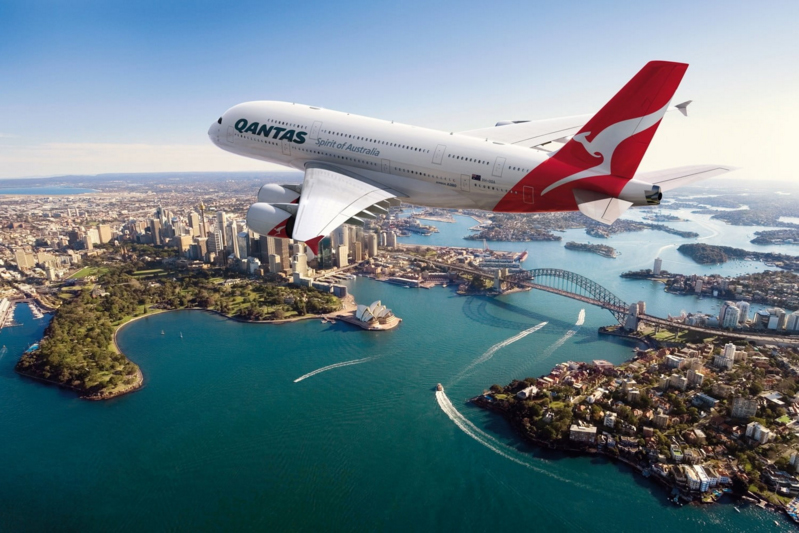The climate impact of flying is already significant, but it’s set to get bigger.

“Things are going great for airlines worldwide,” says Jason Rabinowitz, a self-described “aviation geek” based in New York.
Rabinowitz reports that the industry expects travel demand to grow by six per cent in 2019, and that aircraft makers are inundated with thousands of orders. Aviation is now bigger, richer, sexier, more popular than it ever was.
This is all very exciting. No-one is immune from the allure of air travel – bustling airports and big jet engines, the lure of exotic places and the power to be transported there in a matter of hours. It has become so entrenched in our culture that for some it’s almost routine.
The bug is catching everywhere. Business and leisure travel in China, India, Brazil, Russia and other developing economies has driven a doubling in airline passenger numbers world-wide since 2005, to a mind-numbing 4.3 billion bums on seats in 2018, or nearly 12 million every day.
Industry projections have numbers doubling again by the late 2030s, driven by rising Asian middle-class incomes and cheaper fares, a result of competition and more fuel-efficient planes.
All of which explains the huge demand for new airliners. Hundreds of them are being added to fleets every year. A single Boeing model is now being produced at the rate of 1.4 planes every day, and the company expects to come close to two per day in 2019.
This kind of exponential growth is the dream of every government minister and company executive, including tourism leaders like Luke Martin, CEO of Tasmania’s Tourism Industry Council.
Before the Gell River fire became page one news, Martin wrote a prescient article for the Hobart Mercury last year highlighting the negative impact of wildfire on tourism. In the article he declared his industry’s support for wilderness values and the need for more climate-savvy tourism policy.
One extension of this discussion would be to look at the impact of tourism on the environment. Martin pointed out that the industry is aware of local impact and seeks to minimise it. But it would seem less aware of another impact, more widespread and more insidious.
The booming aviation industry is powered by fossil fuel. Last year, air flights globally consumed 288 million tonnes of it, emitting 907 million tonnes of carbon dioxide, or 29 tonnes every second.
Taking account of the high-altitude impact of these emissions, this amounts to at least 2.5 per cent of the total from all sources. The industry claims the figure is around 2 per cent, but either way that proportion is only going to grow as other sources diminish, such as coal-fired electricity.
There are some mitigating factors. New aircraft today are about 10 per cent more fuel-efficient than those made in 2010, and under a global scheme starting this month the industry has agreed that from 2021 to 2035 it will offset 2.6 billion tonnes of carbon dioxide, or 173 million tonnes a year.
But given that air traffic is expected to be double today’s level within two decades, these developments cannot cut emissions. Slowing their rate of growth is the best we can hope for.
International aviation is governed by a 74-year-old convention that exempts it from the government fuel taxes that apply to other transport modes. The same hands-off-aviation approach saw the industry excluded from climate agreements, including Kyoto in 1997 and Paris in 2015.
Last October’s report by the Intergovernmental Panel on Climate Change on limiting warming raised the unsolved problem of aviation emissions, but offered little in the way of a solution other than replacing short-haul flights with very fast electric trains.
We all must bear some responsibility. For the record, in the past decade I have flown to overseas destinations six times, raising the awkward matter of hypocrisy. But I am slowing down, and although there are many foreign places I’d still like to see, I’ll be content if I see none of them.
Obviously I and millions of others should fly less often and over shorter distances, inform ourselves of aviation’s carbon footprint and pay more for effective offsets. Preferably we should stop flying altogether and use alternatives such as land or sea transport, video conferences and local holidays.
But this won’t happen at scale without some sort of coercion, and cheap flights have made that all but impossible. Picture the result: would-be travellers, egged on by tourism, aviation and all manner of opposing political and corporate interests, venting their fury on hapless governments.
Besides, politicians, business leaders and all the other string-pullers are personally addicted to aviation, for both their convenience and, as they would say, their nation’s economy. Short of climate catastrophe, there can be no resolution to this until we learn to fly without fossil fuel.
Mass air travel is cognitive dissonance writ large. We continue to take to the skies in numbers while being fully aware that it helps significantly to destabilise the climate. No wonder everything to do with climate change is so intractable.
